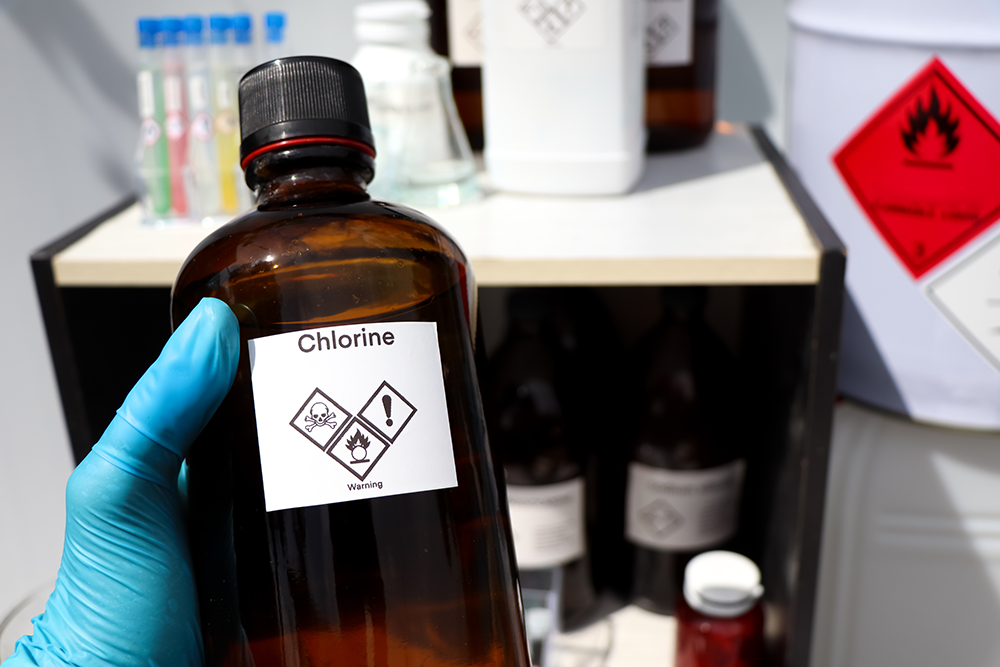Select Your Country/Region
Current Region:
 USA (EN)
USA (EN)
Choose a different country or region to see the content specific to your location
The amount of chlorine needed to treat water depends on a few factors. These include the water's quality, the level of disinfection needed, and its pH levels.
Chlorine is a powerful disinfectant that ensures safe drinking water by killing bacteria and other harmful microorganisms. Maintaining the right chlorine concentration is crucial for effective water treatment, whether for municipal systems, industrial uses, or emergency disinfection.
Making sure drinking water is safe is crucial to public health. The World Health Organization (WHO) has set guidelines to help with this. Specifically, WHO recommends maintaining chlorine residuals within a range of 0.2 to 0.5 mg/L. This concentration is essential for keeping the water safe as it travels through various water supplies and distribution systems.
In situations where contamination is present, it may be necessary to increase chlorine levels to effectively eliminate harmful pathogens.
The G20 countries often support higher chlorine doses to disinfect water. These doses usually range from 1 to 2 mg/L. This is especially true when chlorine demand is high. High demand may be attributable to a greater number of contaminants or to other factors affecting water quality.
This proactive approach helps ensure that communities have access to safe drinking water.
Swimming pools necessitate a higher level of chlorine to ensure proper sanitation. A chlorine concentration of 1 to 3 mg/L is important.
This level helps kill harmful bacteria and viruses that can be dangerous to health. Maintaining this concentration is important. It helps ensure the water is safe, clean, and enjoyable for all swimmers.
The treatment of wastewater requires even greater dosages, typically ranging from 5 to 15 mg/L. The high concentration of organic matter and contaminants present in wastewater explain this range.
In times of emergencies, particularly following natural disasters, it becomes crucial to ensure that water is safe for consumption. In such situations, a more potent chlorine solution is often necessary to effectively purify the water. It may be necessary to use up to 8 mg/L chlorine to achieve this safety standard.
For small water purification needs, a simple method is to add 8 drops (0.5 mL) of unscented chlorine bleach to one gallon of water. This method is both simple and effective. After adding the bleach, it is essential to let the water sit undisturbed for a minimum of 30 minutes.
This waiting period is the contact time. It enables the chlorine to act effectively and make the water safe to drink.

Types of chlorine used in water treatment:
The choice depends on the method and long-term needs of the system. Factors like chlorine demand, temperature of the water, and contact time all affect how effective the chlorine will be.
To achieve safe and effective disinfection in water treatment systems, accurate dosing is critical. Dosatron chlorine dosing pumps are great for keeping a steady chlorine level. They work well in drinking water treatment and sanitation systems.
These pumps operate without electricity, relying on water flow to power the system, making them reliable and energy-efficient. They allow for precise mixing of liquid solutions with water, ensuring the right balance for effective disinfection.
Dosatron systems are easy to use and maintain. They can work under different flow rates and pressures. This makes them a flexible choice for various water treatment needs.
Dosatron is the only company with a selection of water-powered chemical dosing pumps that are NSF Certified. With flow rates of 14 GPM and 40 GPM, they are easy to use. You can adjust them for flexible dosage rates.